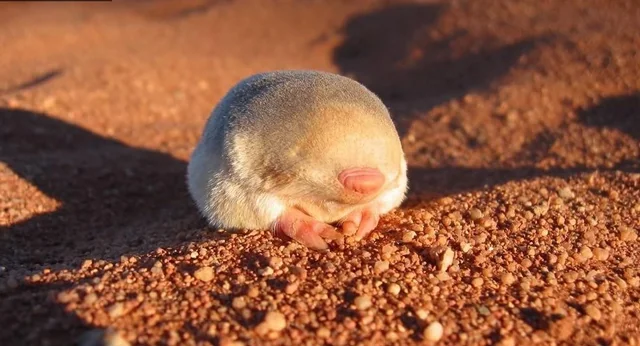Northern marsupial moles, also known as kakarratuls to the First Nations peoples of the Western Desert in Australia, are a fascinating and elusive species. These tiny creatures, measuring just four inches from nose to tail, boast shaggy golden fur and are entirely eyeless. Unlike their North American mole counterparts, they belong to the marsupial family.
Despite their abundance in the Great Sandy Desert and surrounding regions, sightings of northern marsupial moles are exceedingly rare. This is largely due to their subterranean lifestyle, as they dwell in tunnels beneath sand dunes, maneuvering with a swimming-like motion facilitated by their flipper-like front feet.
Indigenous ranger Denzel Hunter, who works to conserve wildlife in Nyangumarta lands, attests to the challenges of spotting these elusive creatures. “Every time we go out looking for northern marsupial moles, we find evidence that they’re there. But I’ve never seen one,” he explains.
Recently, Kanyirninpa Jukurrpa Martu rangers made a remarkable discovery in the Great Sandy Desert: a kakarratul. This sighting, a rare occurrence in the past decade, sheds light on the species and underscores the invaluable role of Indigenous ranger groups in protecting Australia’s vast desert landscapes.
These ranger programs, overseeing significant portions of the country’s protected areas, play a crucial role in deepening our understanding of the desert ecosystem. Lynette Wildridge, another Nyangumarta ranger, reflects on her encounter with a northern marsupial mole, describing it as “beautiful and fluffy.” However, despite her decade-long tenure, she has only encountered the animal once.
Marsupial moles thrive in the sandy terrain of sand dunes, utilizing the moist sand beneath to regulate their body temperature amidst extreme desert conditions. With their acute sense of smell and vulnerability to predators like dingoes and birds of prey, these subterranean dwellers epitomize the resilience of Australian wildlife.
The allure of the northern marsupial mole lies in its uniqueness and mystery. Gareth Catt, program manager of the Indigenous Desert Alliance, emphasizes their enigmatic nature, remarking that they “capture the imagination” with their unconventional appearance and elusive habits.
The success of ranger programs hinges on passing down knowledge through generations. For Indigenous rangers like Lynette Wildridge, instilling a connection to country and conservation in future generations is paramount. Each discovery, such as the recent sighting of a kakarratul, serves as a catalyst for inspiring curiosity and stewardship among young Indigenous Australians.
As Zan King, executive director of the Kanyirninpa Jukurrpa Martu rangers, shares, the excitement generated by such discoveries fuels the passion of rangers and motivates them to continue their conservation efforts. Despite the challenges, their commitment remains unwavering: “We just have to keep digging,” says Wildridge.















































